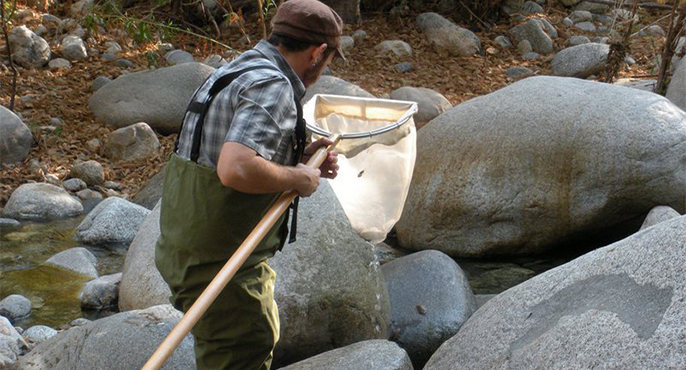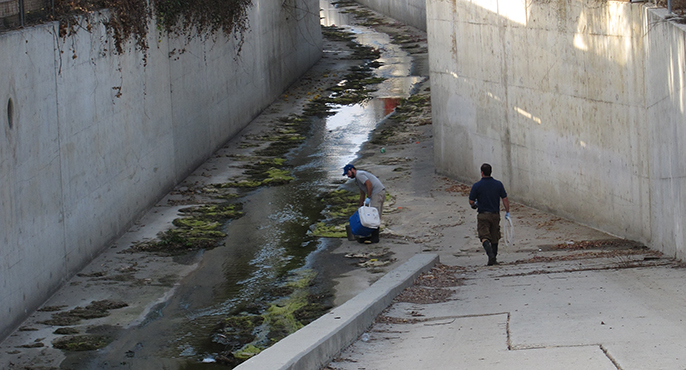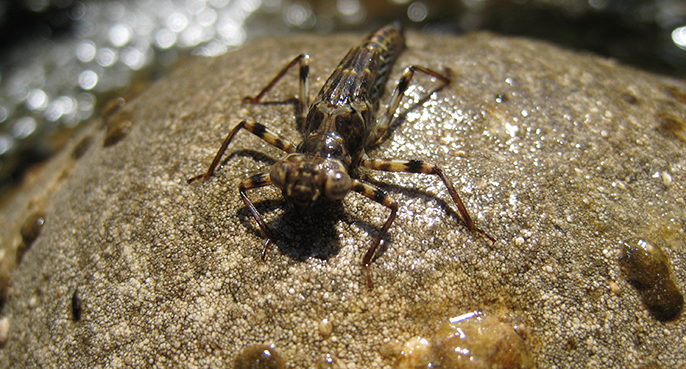![]() Biological assessment, or bioassessment, is the science of evaluating the health of an aquatic ecosystem by assessing the organisms that live within it. From algae to invertebrates to fish and amphibians, biological indicators of ecological condition play a key role in helping the environmental management community monitor the overall health of water bodies. Unlike traditional monitoring that relies on chemical and physical parameters, bioassessments capture the cumulative effects of all changes to a water body over the lifespan of the organisms that inhabit it. Thus, bioassessments are directly tied to environmental managers’ bottom-line mission to protect ecological integrity.
Biological assessment, or bioassessment, is the science of evaluating the health of an aquatic ecosystem by assessing the organisms that live within it. From algae to invertebrates to fish and amphibians, biological indicators of ecological condition play a key role in helping the environmental management community monitor the overall health of water bodies. Unlike traditional monitoring that relies on chemical and physical parameters, bioassessments capture the cumulative effects of all changes to a water body over the lifespan of the organisms that inhabit it. Thus, bioassessments are directly tied to environmental managers’ bottom-line mission to protect ecological integrity.
Bioassessments are integral to the design of comprehensive, science-informed strategies for managing aquatic ecosystems. SCCWRP is focused on developing and validating an increasingly broad set of bioassessment tools that are adapted for use in all major water body types. SCCWRP’s goal is for California’s water-quality management community to be able to routinely apply multiple bioassessment tools in tandem to better understand and protect ecosystem condition.

Translating bioassessment to management
Bioassessment tools developed by SCCWRP and its partners make use of quantitative, standardized approaches for assessing water bodies. Thus, California’s environmental management community uses bioassessment tools – especially indices of biotic integrity – to help protect a wide range of designated beneficial uses for water bodies, from human recreation to habitat protection.
- Bioassessment is one of three lines of evidence used to assess the condition of seafloor sediment via the sediment quality triad scoring tool, co-developed by SCCWRP.
- Bioassessment-based monitoring is required in National Pollutant Discharge Elimination System (NDPES) permits to track whether the discharges are having adverse ecological impacts.
- Bioassessment is an integral part of the core monitoring work of the Southern California Stormwater Monitoring Coalition‘s Regional Watershed Monitoring Program and its marine counterpart, the Southern California Bight Regional Monitoring Program.
- Bioassessment tools co-developed by SCCWRP are at the heart of a proposed biological integrity and biostimulatory substances policy that will govern the condition of wadeable streams statewide; comparable regional policies also are at various stages of development.

Tracking ecological integrity of water bodies
SCCWRP is part of a network of researchers working to develop management-applicable methods and tools for conducting bioassessments statewide. SCCWRP’s vision is for this work to serve as an encompassing technical foundation for tracking the ecological integrity of California water bodies. This research falls into three main categories:
- Condition assessments: SCCWRP and its partners are developing bioassessment tools and methods to evaluate and quantify the condition of water bodies.
- Causal assessments: SCCWRP and its partners are applying bioassessment data and analyses to diagnose the cause(s) of water body impairment.
- Progress toward beneficial-use goals: SCCWRP and its partners are helping water-quality managers to establish scientifically defensible, bioassessment-based benchmarks and targets for tracking their progress toward achieving beneficial-use goals.

Major aquatic habitats where SCCWRP is developing bioassessment tools
Freshwater
- Wadeable streams/rivers
- Intermittent/ephemeral streams
- Lakes
- Depressional wetlands
- Seeps/springs
Marine
- Nearshore sediment
- Nearshore hard-bottom/rocky
- Continental shelf sediment
- Continental shelf water column
- Continental slope and beyond
- Estuaries/wetlands
